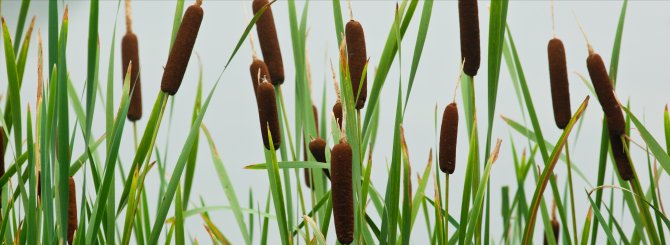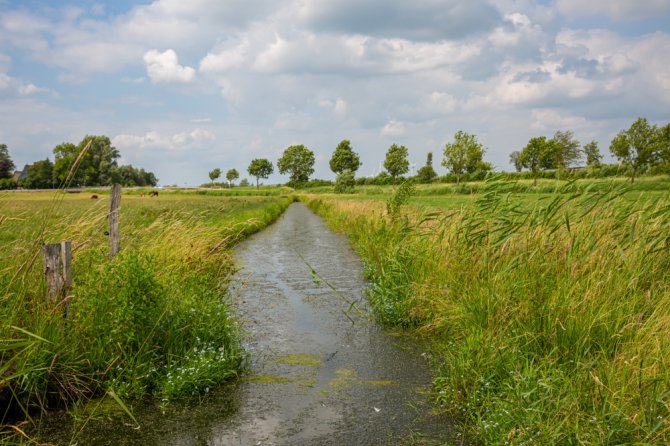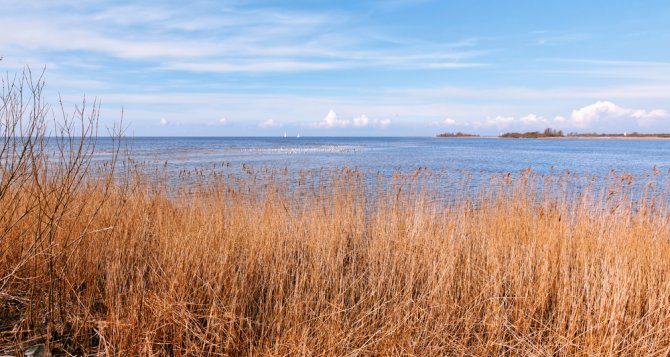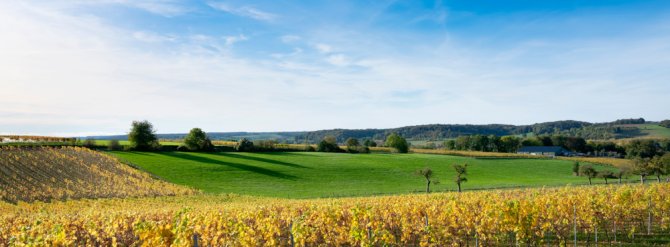
Background
Nature-based solutions: what are the options?
Researchers at Wageningen have described how nature-based solutions could be used to make the Netherlands more sustainable. But what natural solutions are available to us? The researchers have grouped solutions into 10 categories, such as natural coastal defences and dynamic nature management.
The most high-profile example of a project using a nature-based solution is probably Room for the River. This intervention ensured that from 2007 onwards, rivers in the Netherlands were allocated more space, increasing their capacity to hold and discharge water. The project also supported the development of natural landscapes and recreational pursuits in the floodplains.
Various other measures that harness natural processes to improve our security, quality of life or biodiversity have already been in place for some time. In 1997, the organised breaching of the dune in Schoorl to let seawater in became a global news story. That project, De Kerf, has become known as an example of dynamic nature management. The intrusion of the salt water created an opportunity for rare plants such as orchids and parnassia to grow.
In the Nature-based Future Challenge more than 700 students from 147 universities on six continents get the chance to explore the potential of the nature-based thinking. Divided into interdisciplinary teams, they develop their nature-based vision for the Bangladesh and its Bengal delta. The Challenge is organized by Wageningen University & Research in collaboration with the Foundation for Food & Agriculture Research, University Fund Wageningen, and a network of over 20 other organisations with expertise on water, climate, and nature-based solutions.
This kind of nature-based solution, in which natural processes support the development of saline plants and sand replenishment, is now happening at a number of different sites along the coast of the Netherlands. In 2015, the Hondsbossche Dunes were created by spraying 30 million cubic metres of sand at the site of the existing Hondsbossche sea dyke. The objective was to combine coastal defences with the development of the natural environment and recreation.
- Unfortunately, your cookie settings do not allow videos to be displayed. - check your settings
What objectives can we achieve through the use of nature-based solutions?
Daan Verstand, a researcher in climate adaptation for rural areas at WUR, worked with fellow researchers to identify 10 categories and he published these in a catalog. Projects have already been established under all 10 categories, but many more are also being developed.
1: Dynamic nature management
Land development and management measures in which natural processes stimulate and reinforce environmental restoration. The dune breach at Schoorl mentioned above is an old example of that. Another well-known example is the introduction of large grazing animals in nature reserves as a way of amplifying natural dynamics and diversity. A new example is the intervention by the water utility company PWN to cut down 16 hectares of pine forest in the Bergen dunes to encourage sand drifting. According to PWN, the dune vegetation around Bergen isn’t doing so well and needs more sand and salt from the coastline.

Read more about dynamic nature management (in Dutch):
2: Biobased building
Use of natural, local and renewable materials in construction. One example would be the use of bulrush as an insulation material. Bulrush grows well in peat grassland areas with higher water levels. The Qua Wonen housing association in the Groene Hart region has already used bulrush, sourcedfrom peat grasslands,in an apartment complex in Schoonhoven. This approach could be developed further, for example by processing elephant grass into roof tiles and insulation materials. We can also build more wooden houses, and use hemp and flax fibre in construction.

Read more about biobased building (in Dutch):
3: Nature positive food production
This is mainly about the use of natural processes to improve soils and biodiversity as part of food production. One example would be food forests: forests with trees and bushes that produce fruits, nuts, and edible roots and shoots, while also attracting insects and birds and providing nutrients to the soil. More than 100 hectares of food forest have already been planted in the Netherlands. Another option is strip intercropping and mixed cropping, which is one element of the research being carried out by WUR at the Farm of the Future.
- Unfortunately, your cookie settings do not allow videos to be displayed. - check your settings
Read more about nature positive food production:
4: Restoration of river mouths
Designing or redesigning river mouths in a way that creates more space for tidal dynamics, freshwater-saltwater transition zones and sedimentation processes. One example is the opening of the Haringvliet sluices, so that sea fish such as salmon, trout and sturgeon get the chance to migrate up the rivers behind and to spawn. That hadn’t been possible since 1971, when the Haringvliet sluices were constructed as part of the Delta Works. Another example is the Oesterdam Sand Nourishment project. The construction of the storm surge barrier has led to ‘sand starvation’ in the Eastern Scheldt: more sand is being eroded than is being added through sedimentation. This means the mudflats and shoals dry out less often, which in turn means birds can’t find as much food there. Sand nourishment and the construction of artificial oyster reefs compensates for this ‘sand starvation’.
- Unfortunately, your cookie settings do not allow videos to be displayed. - check your settings
Read more about the restoration of river mouths
5: Green-blue infrastructure
The restoration and construction of green-blue landscape elements such as hedgerows and streams, which deliver enhanced landscapes, natural pest control, crop pollination, improvements to water quality, and water storage. One example isthe green-blue redesign of the Molenwater Park in Middelburg, with a wadi system that acts as a buffer for rainwater from surrounding buildings and streets while also improving biodiversity. Another example is the ‘Aanvalsplan Landschap’ (Landscape Plan of Attack), which aims to achieve a 10% level of green-blue infrastructure in the Netherlands to support the objectives of the Climate Agreement and the restoration of biodiversity.

6: Natural coastal defences
The development of flexible and adaptive coastal defences by using and stimulating natural processes such as erosion, sedimentation and dune vegetation. One example would be the construction of the Hondsbossche Dunes mentioned above. Another project is located in the Wadden region, where land reclamation has meant there’s only limited scope for sediment and sludge deposits. Cutting through into the polder floodplains means the sludge has somewhere to go, which increases carbon capture and also raises the ground level of the coastal zone.
- Unfortunately, your cookie settings do not allow videos to be displayed. - check your settings
Read more about Natural coastal defences (in Dutch):
7: (Re)design of streams and rivers
Interventions that slow down water discharge and increase the infiltration capacity of waterways, as a way of combining water safety, water availability and environmental restoration. Room for the River is a successful example of this. Another example is the restoration of the Leuvenum stream in the Veluwe. Sand replenishment has meant that this stream floods more often, which irrigates the surrounding forest. This reduces the dessication and acidity of the soil, and increases biodiversity. A recent example is the Grensmaas Project, where gravel extraction is being used to help develop the natural environment and protect against high water levels.
- Unfortunately, your cookie settings do not allow videos to be displayed. - check your settings
Read more about the (re)design of streams and rivers
8: Rewetting
Using more natural water levels to reduce soil subsidence and CO2 emissions (in the peat grasslands), improving drought resistance (particularly on sandy soils) and counteracting salinisation (in coastal zones). One example is the Peatland Innovation Programme, which is experimenting with wet farming (of both crops and livestock) in the province of North Holland, with high groundwater levels. The ‘Climate-Proof Friesland 2050’ vision also imagines how the province might base its landscape design on natural water levels, with a view to managing rising sea levels, soil subsidence, floods and salinisation.

9: Natural water purification
Improving water quality through natural processes, using flora, fauna and subterranean features. One well-known example is the way that the dunes in the Netherlands have long acted as a filter for the purification of our drinking water. A smaller-scale example is the water utility company Waternet Amsterdam, which placed a helophyte filter in the Erasmus canal to filter out organic waste matter such as nitrogen and phosphate. The possibility of creating a large-scale ‘filtering landscape’ in Lake IJssel is also being explored.

Read more about natural water purification (in Dutch):
10: Freshwater storage
Capturing water by restoring the landscape’s sponge effect, and storing water for dry periods. For example, the Limburg water authority has a policy designed to encourage farmers to capture and store more water on their land, as a way of tackling the flooding caused by climate change. Holding more water on the fields will reduce the amount of water flowing down from the hills to the river. Another example is the Amstel Gooi and Vecht water authority, which wants to designate the Ronde Hoep polder as an emergency flood plain in the event of extreme weather conditions.

Read more about freshwater storage (in Dutch):
How can we apply nature-based solutions?
First we have to establish the objective, says researcher Marlies van Ree. “To what extent does the solution need to contribute to climate challenges, improving biodiversity, strengthening the natural soil and water system, or other issues? That will help determine which regional bodies and experts need to become involved with the solution. Based on that, we will work with stakeholders to translate knowledge and insights into a plan for the future using nature-based solutions, a design, or possible development pathways.”
At the end of this year the Wageningen researchers will be publishing a catalogue which will elaborate on the 10 categories and nature-based solutions, as well as providing examples and explaining the social value they could bring, along with the issues that would need to be considered during their implementation.
Because nature-based solutions are so broad in scope, further research is needed on what they could contribute and what they will cost. This is now being researched through theGrowth Fund NL2120 project.